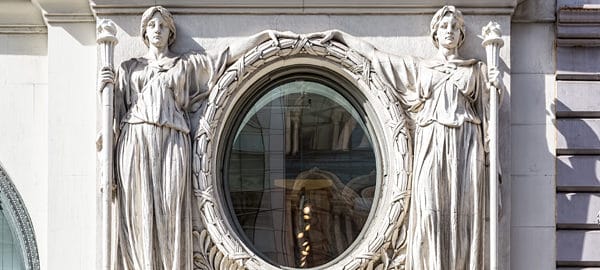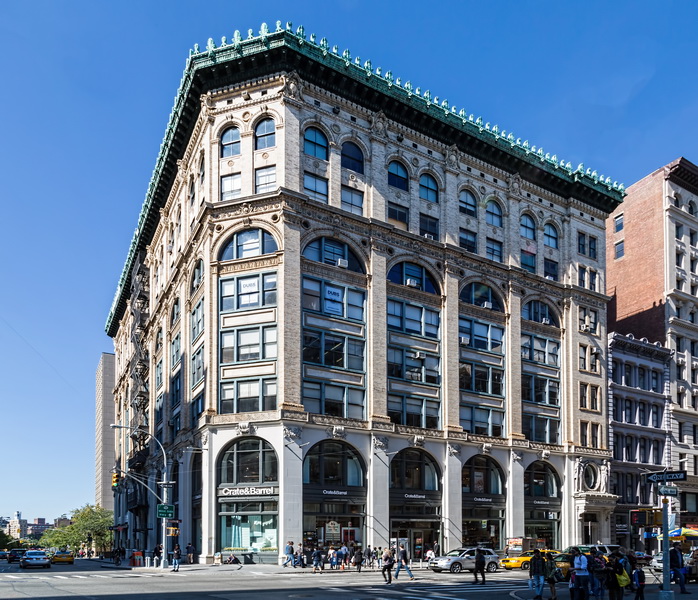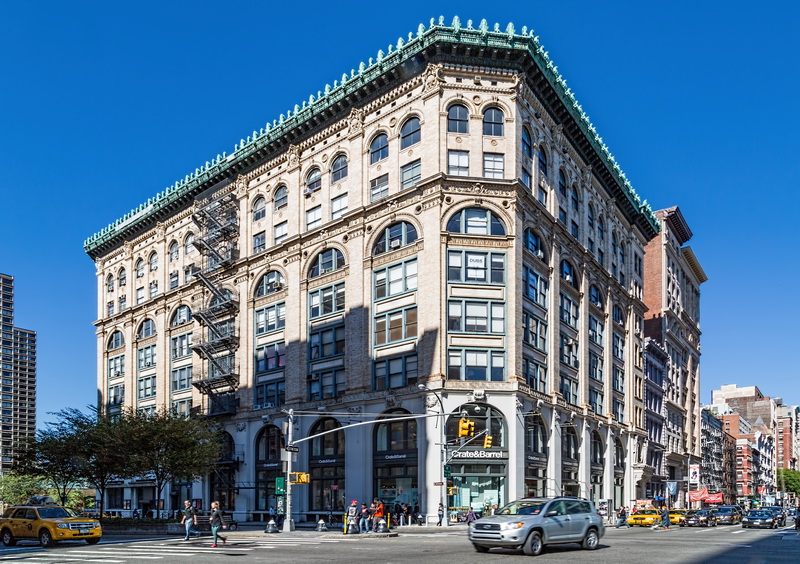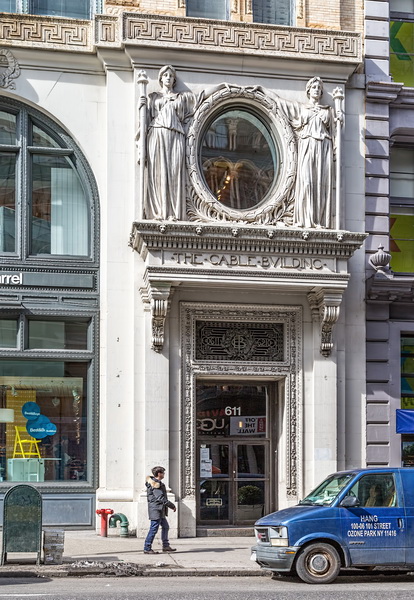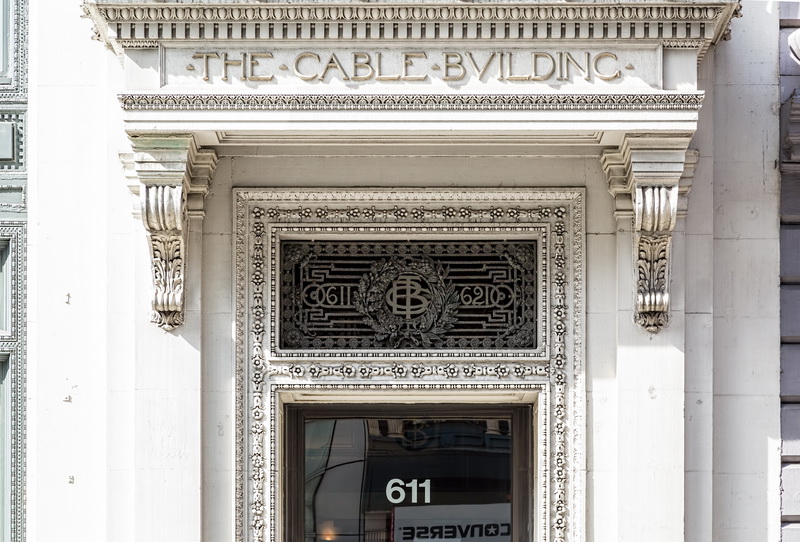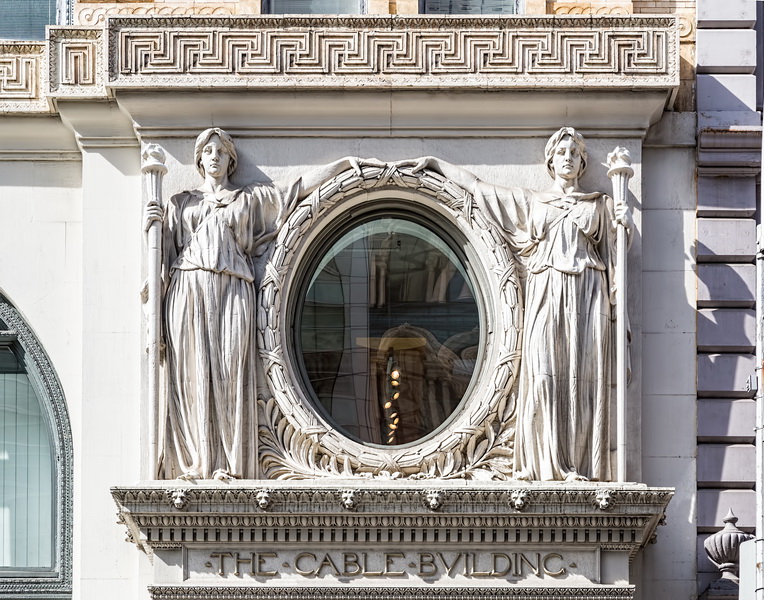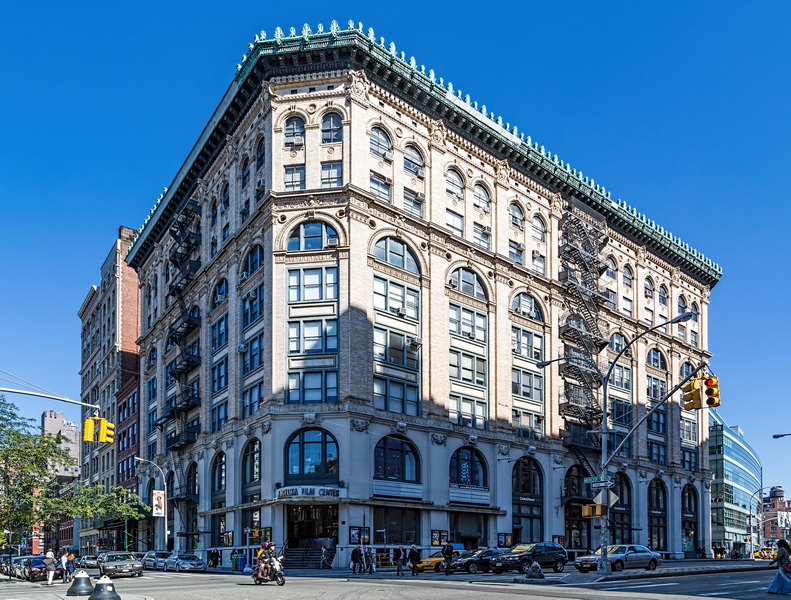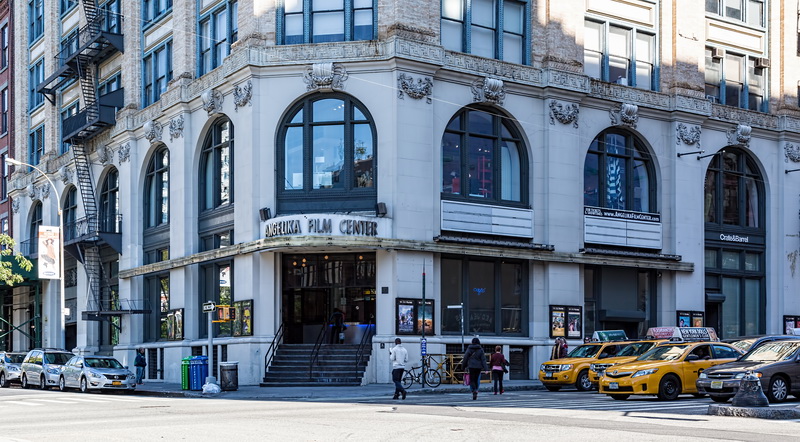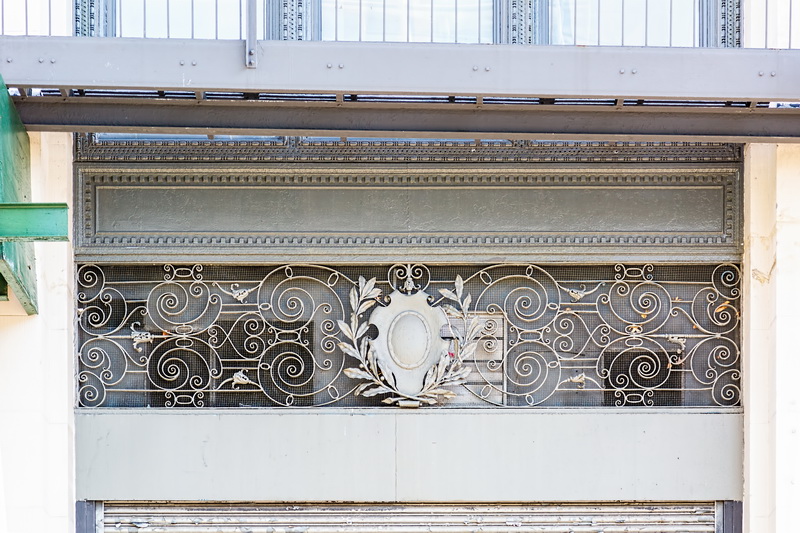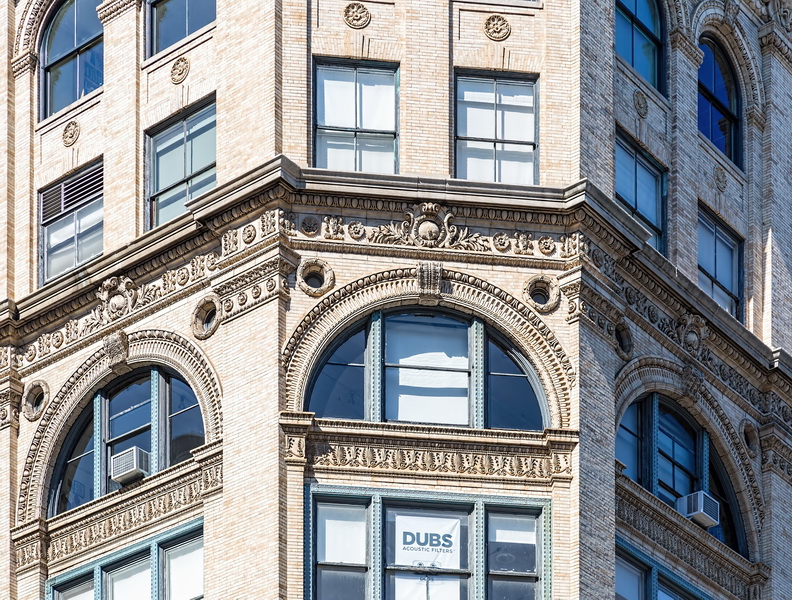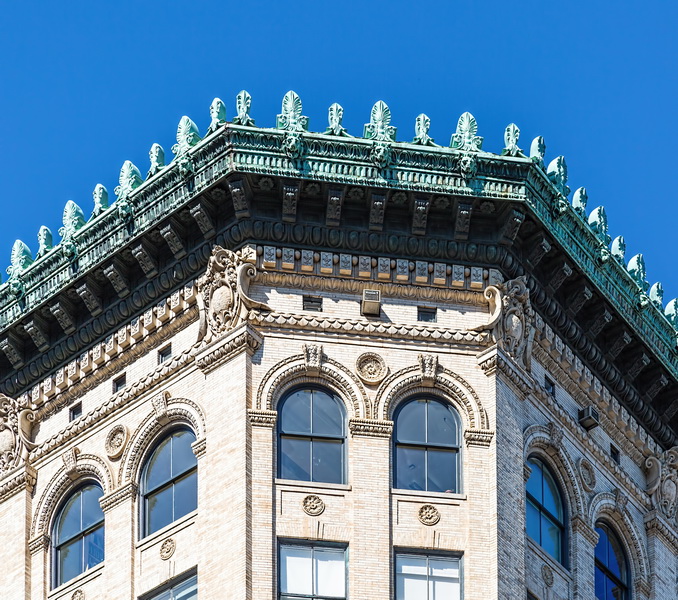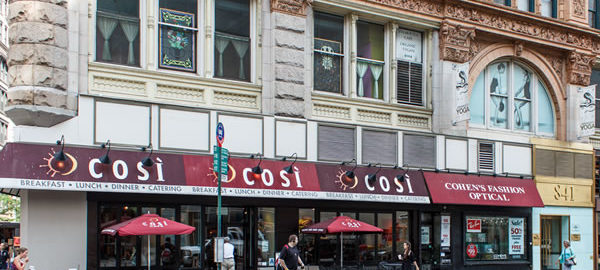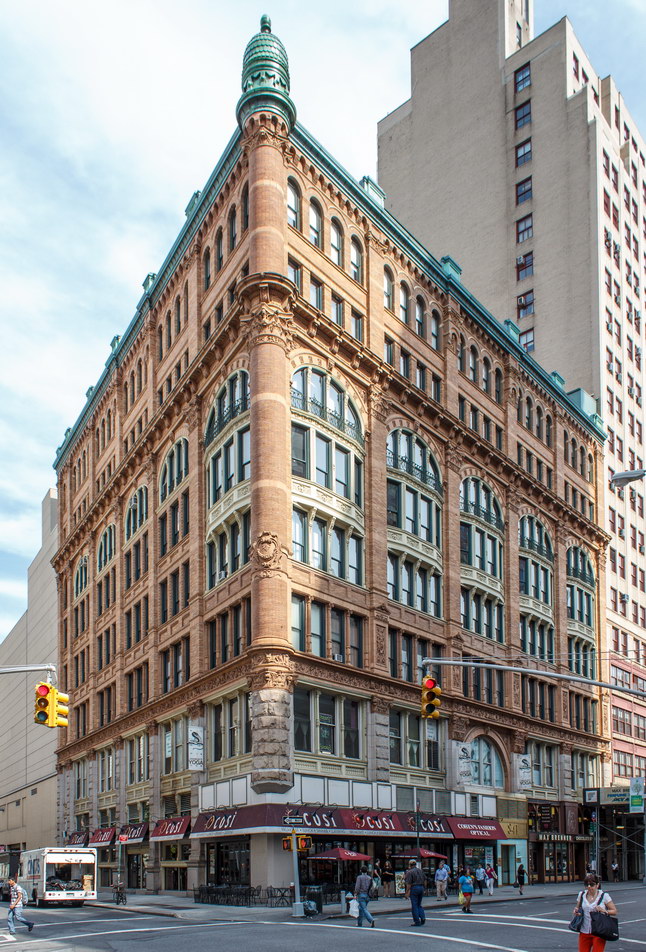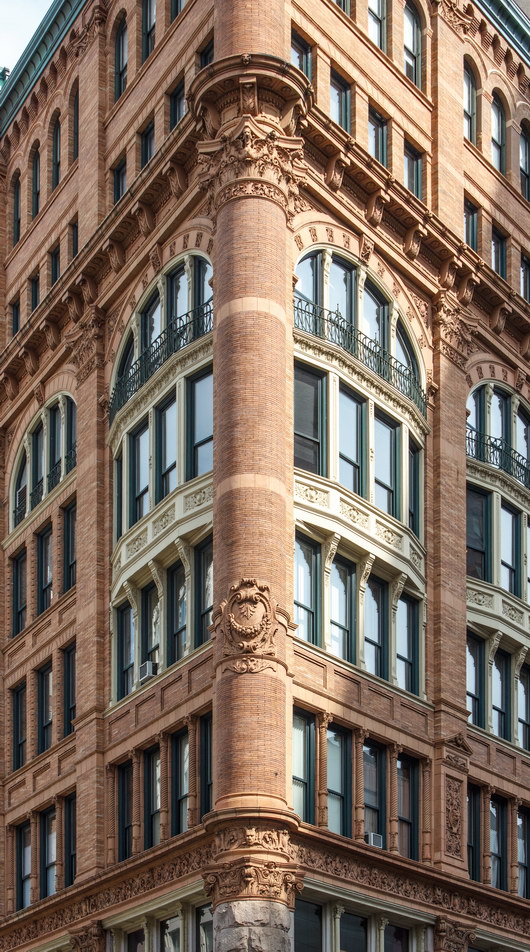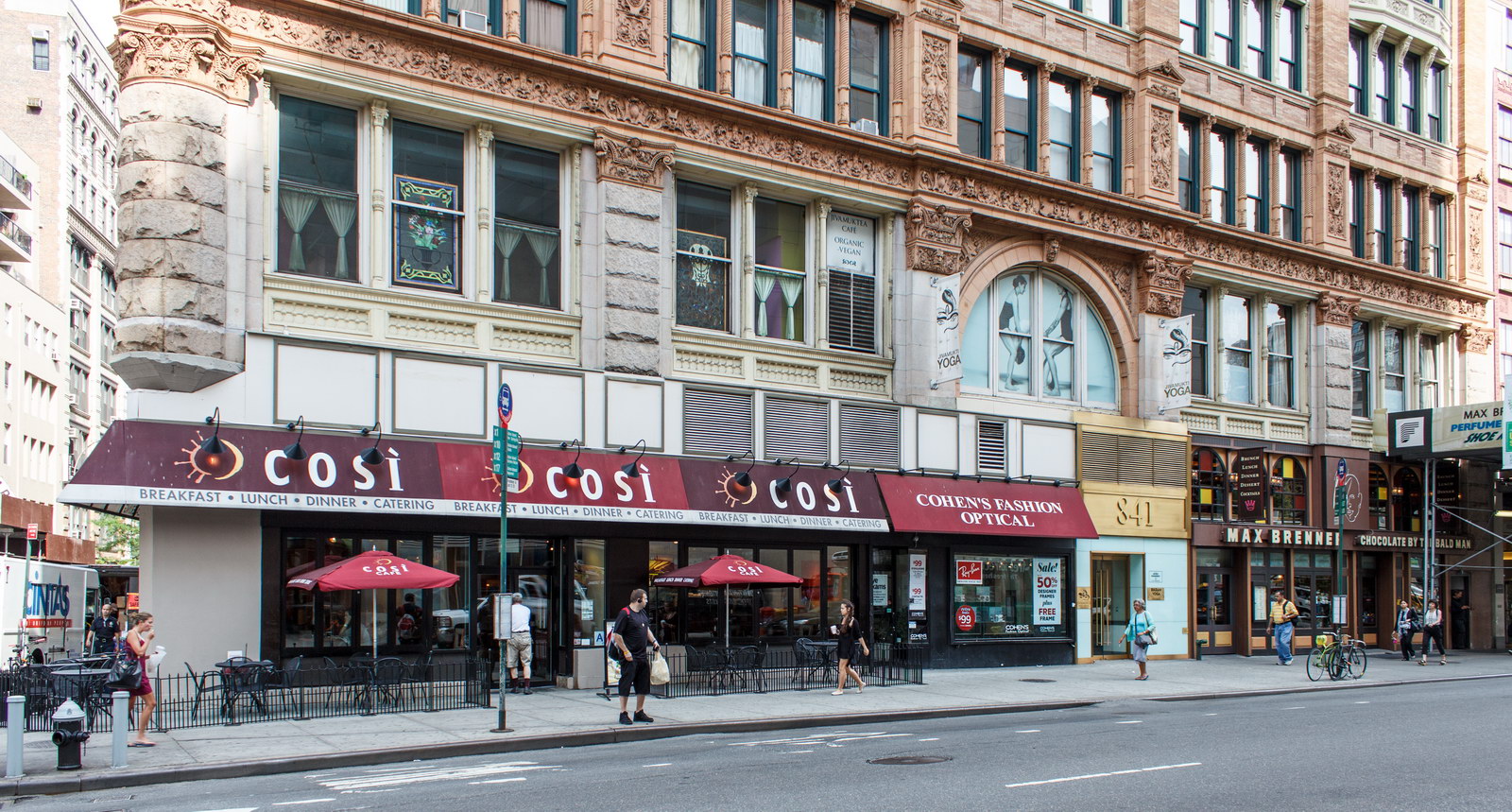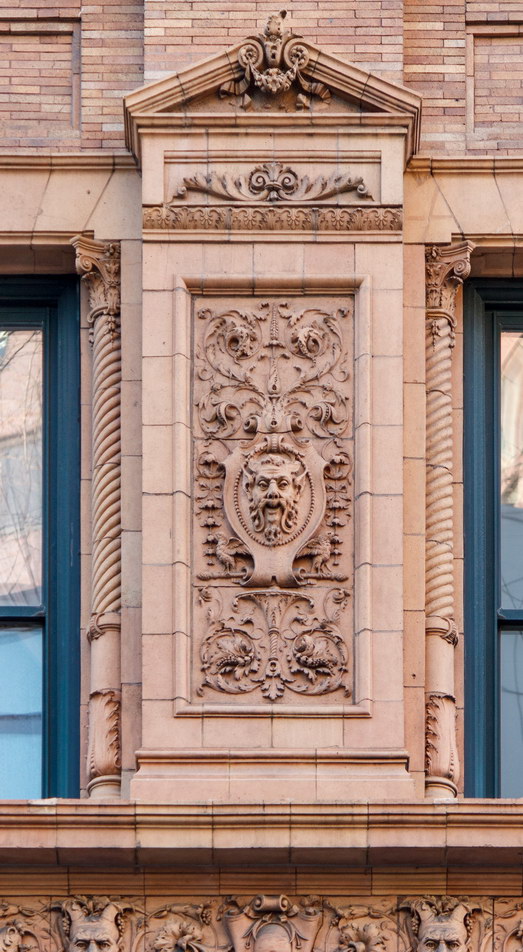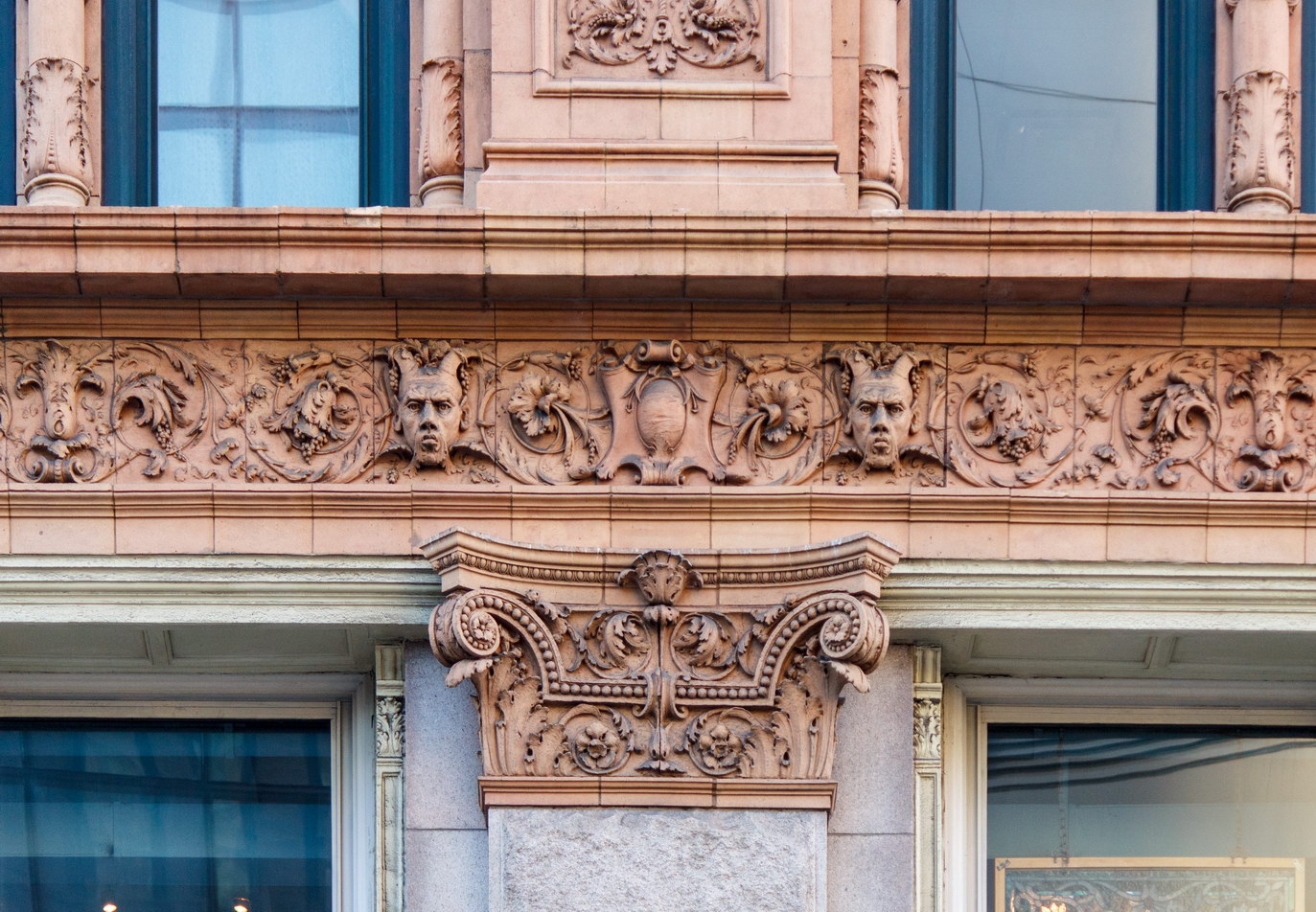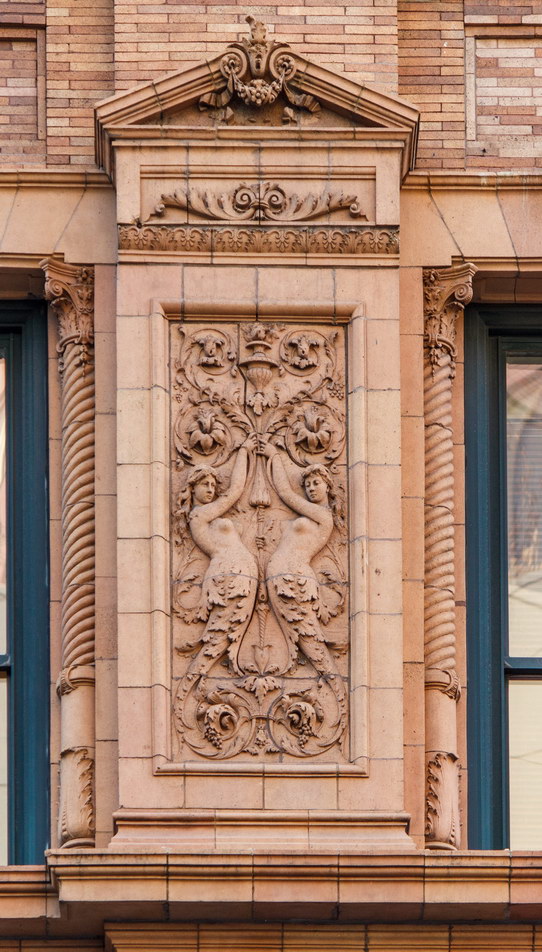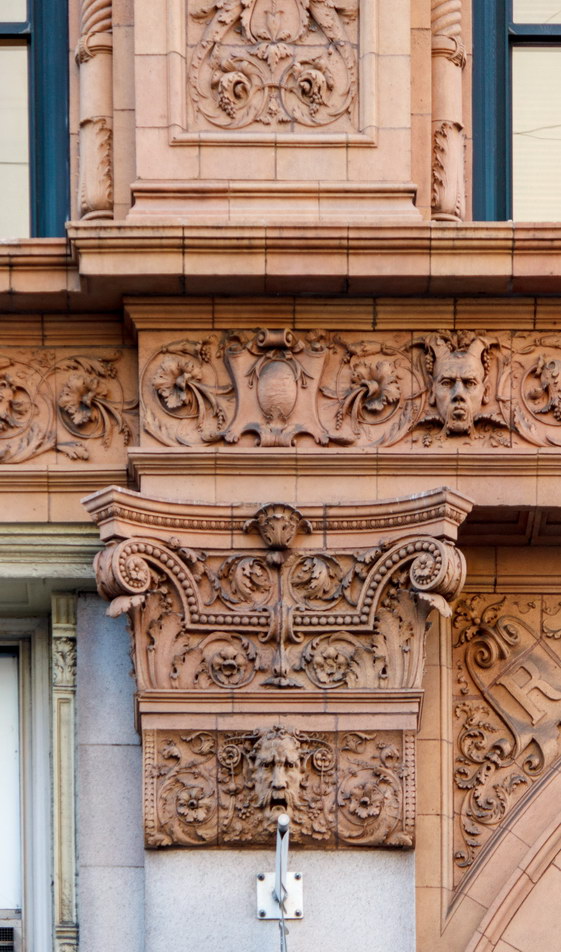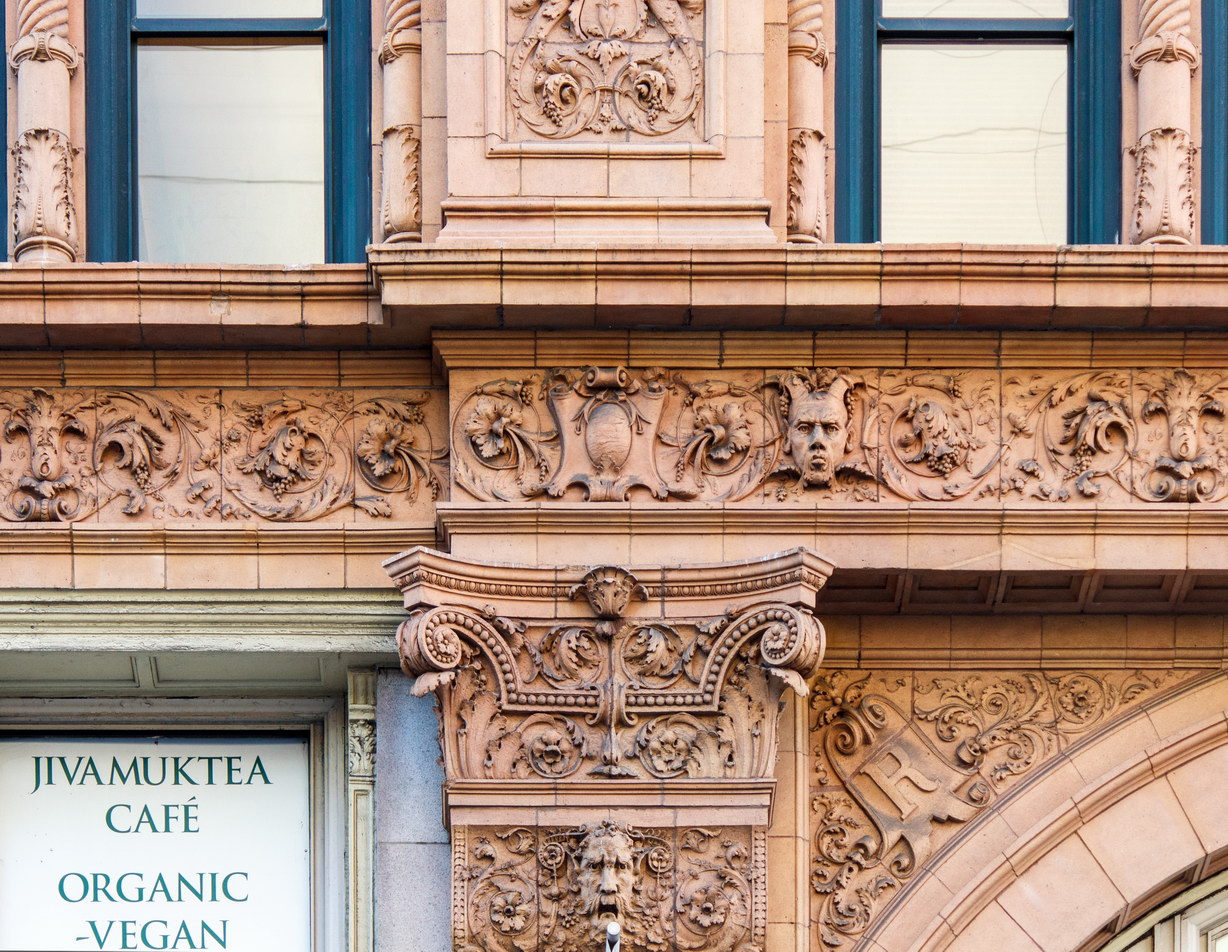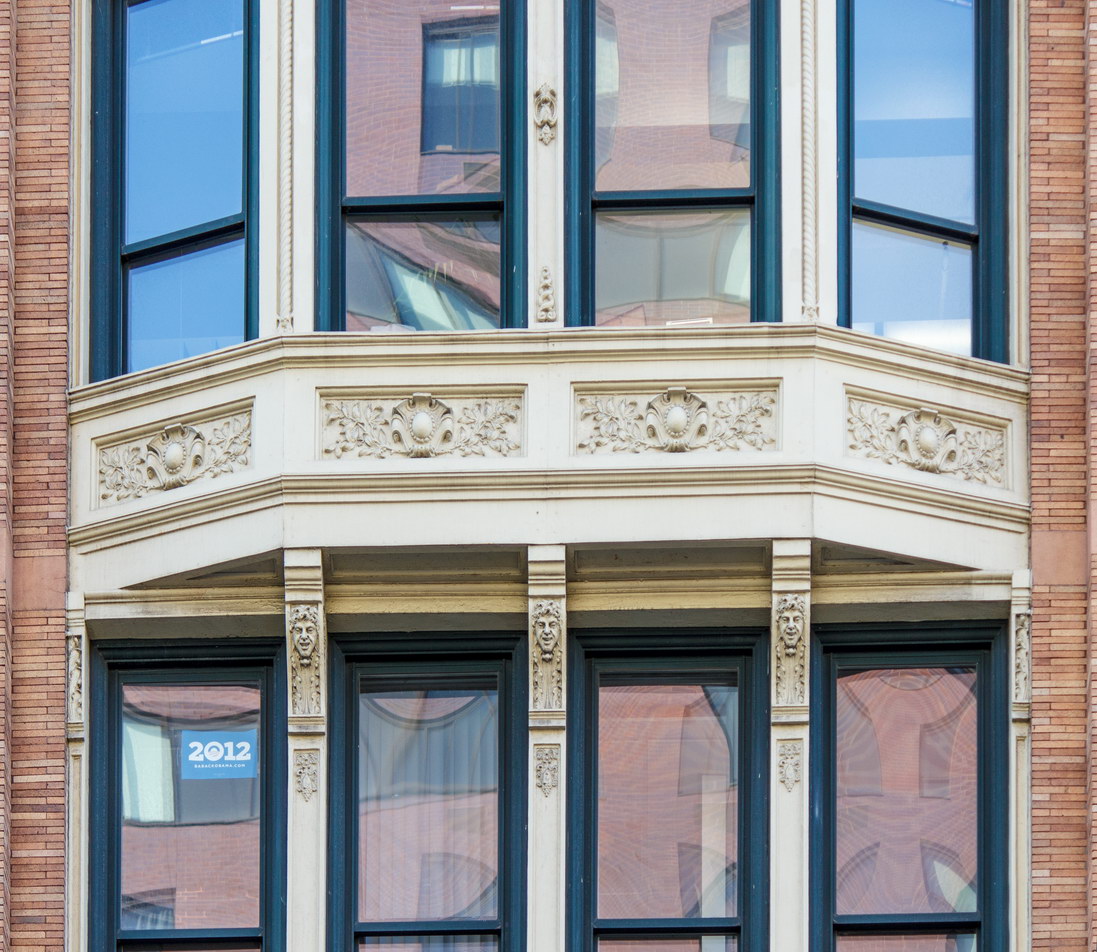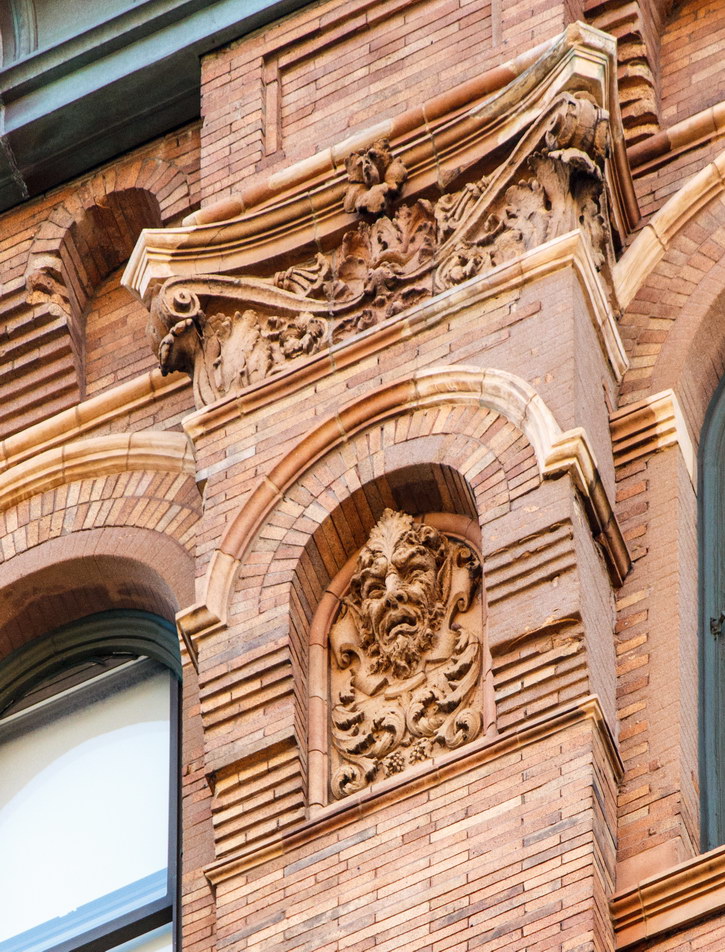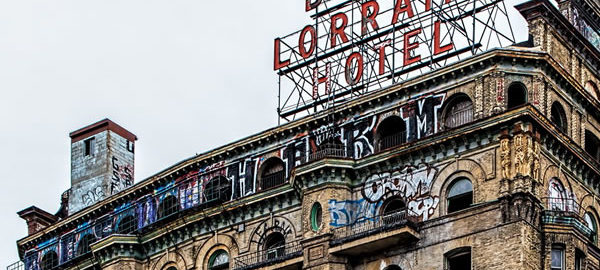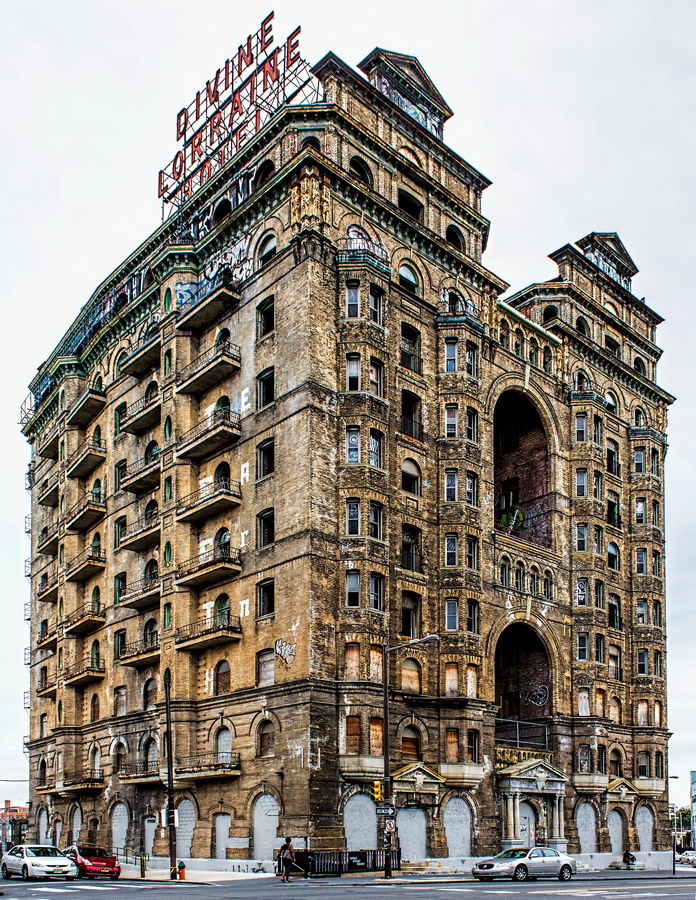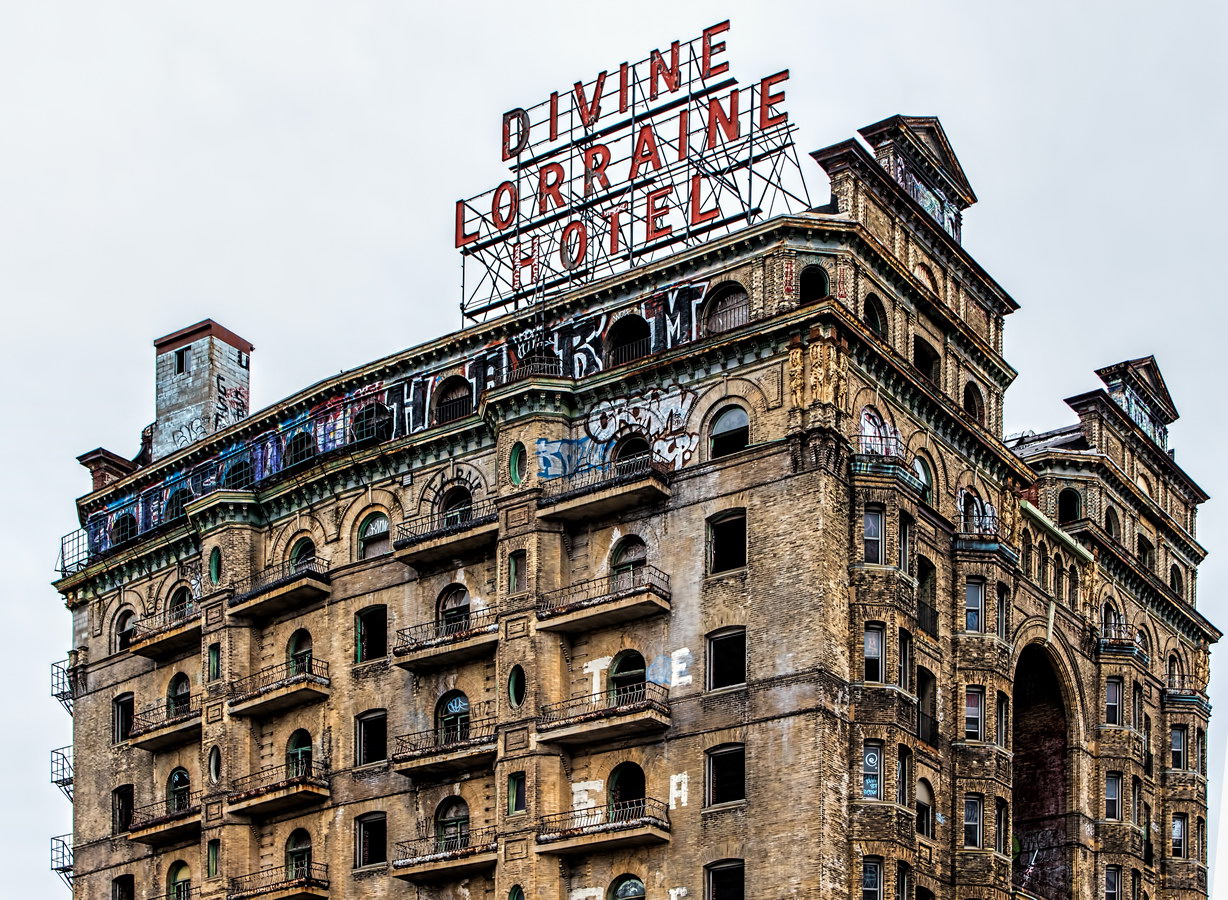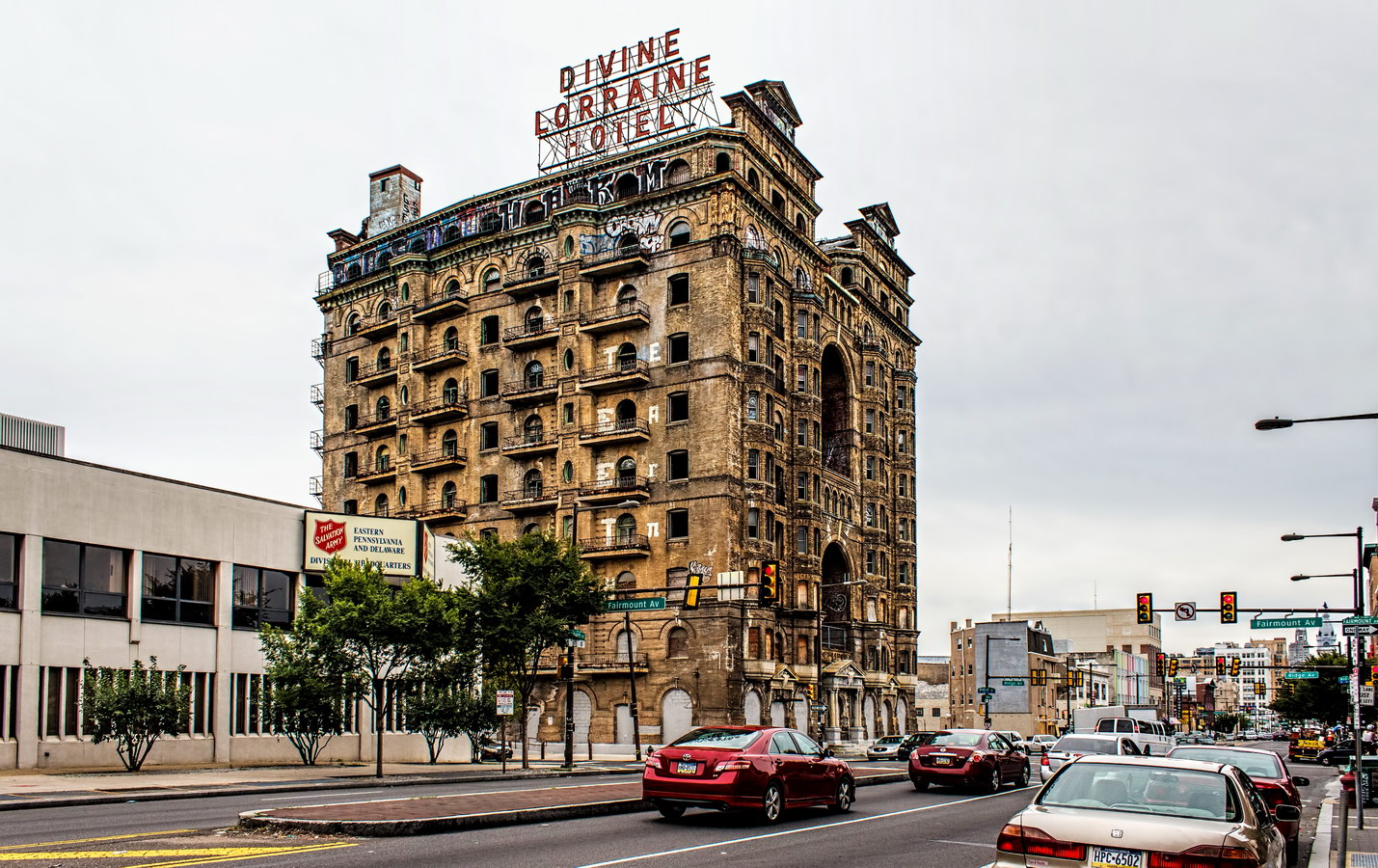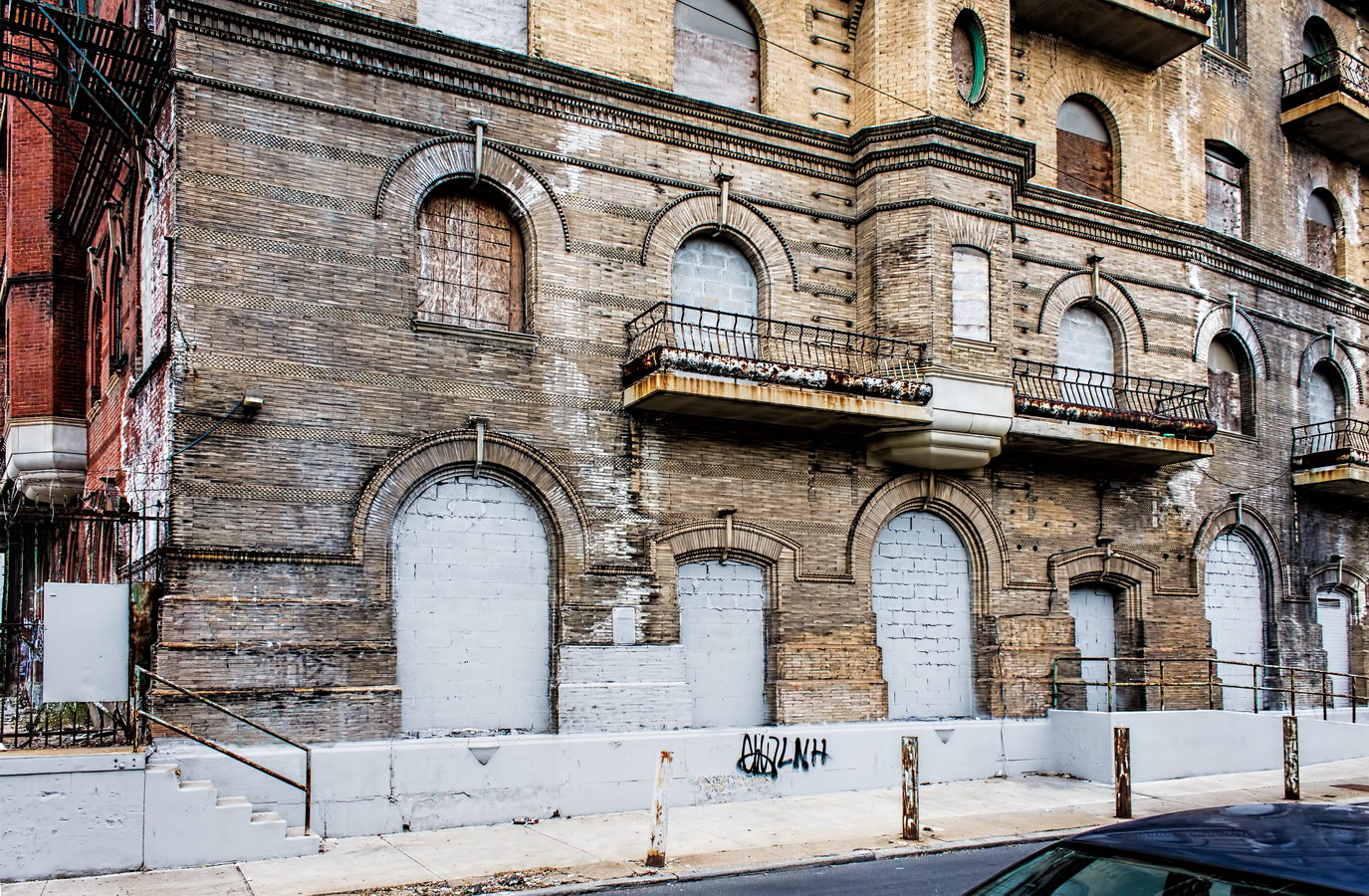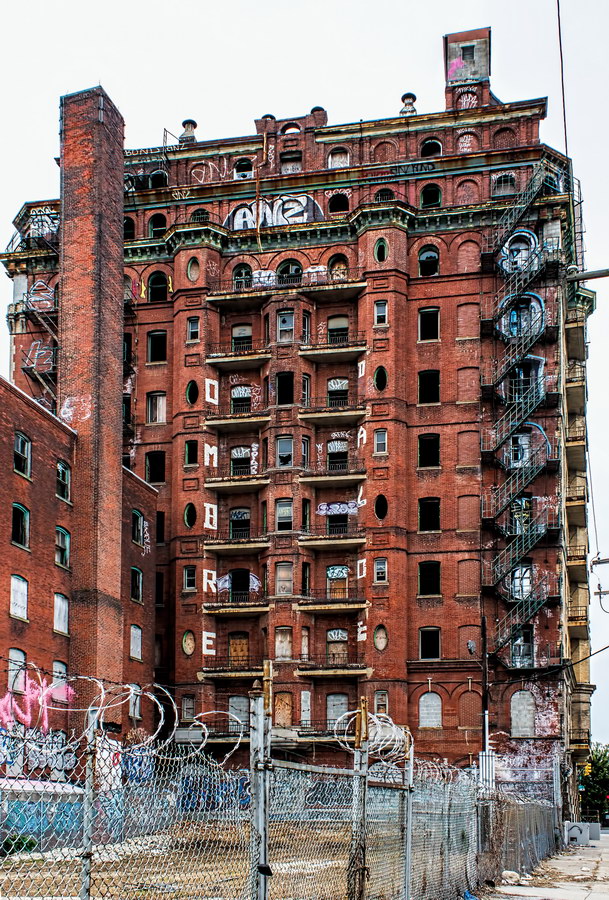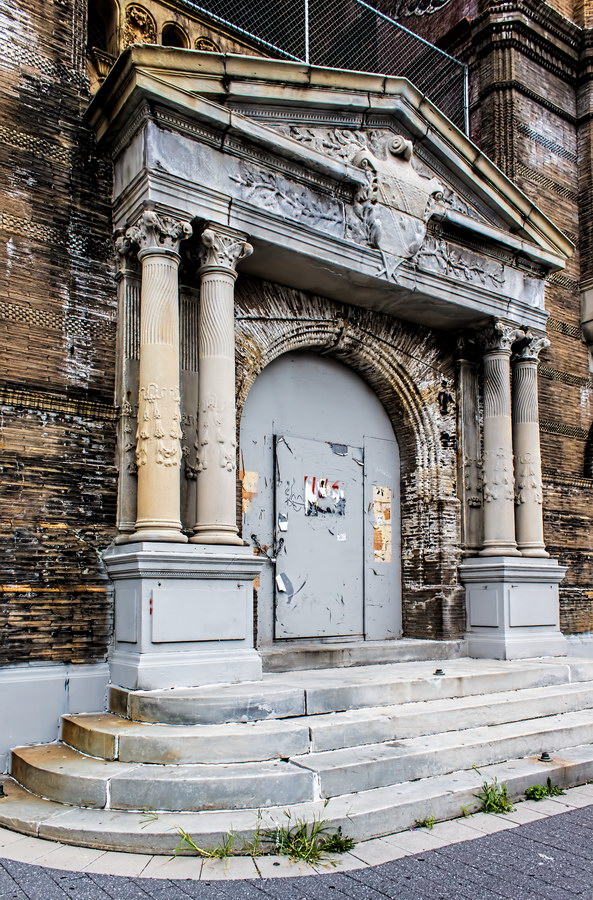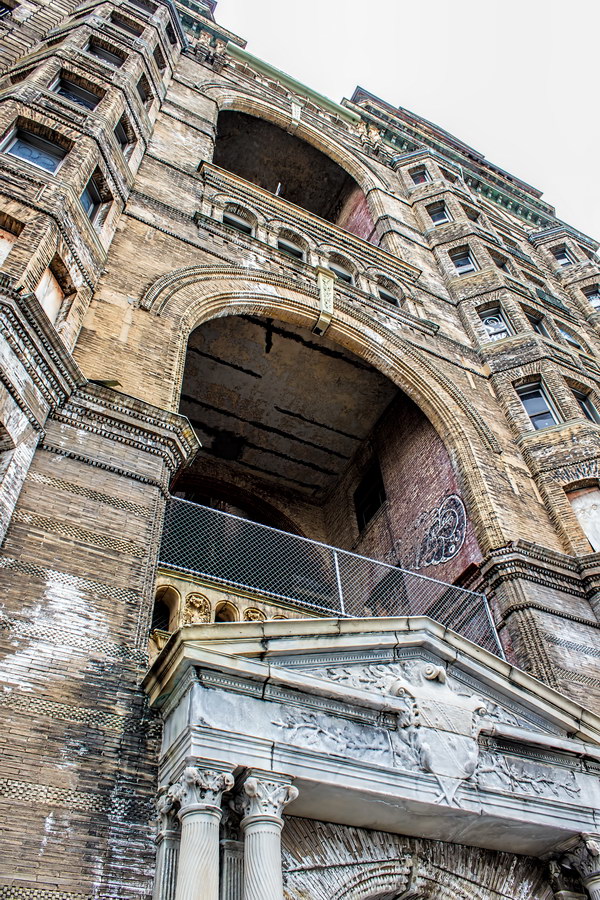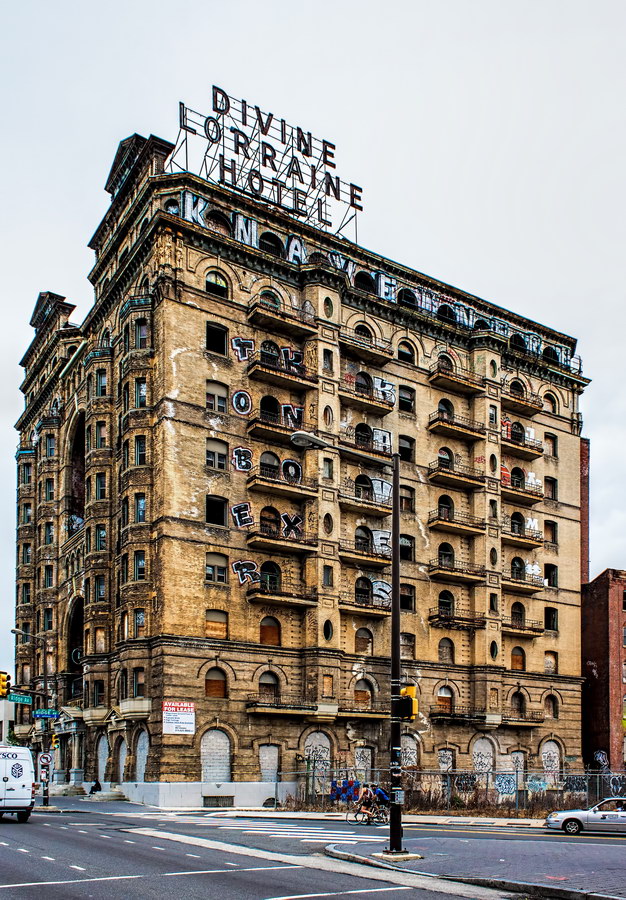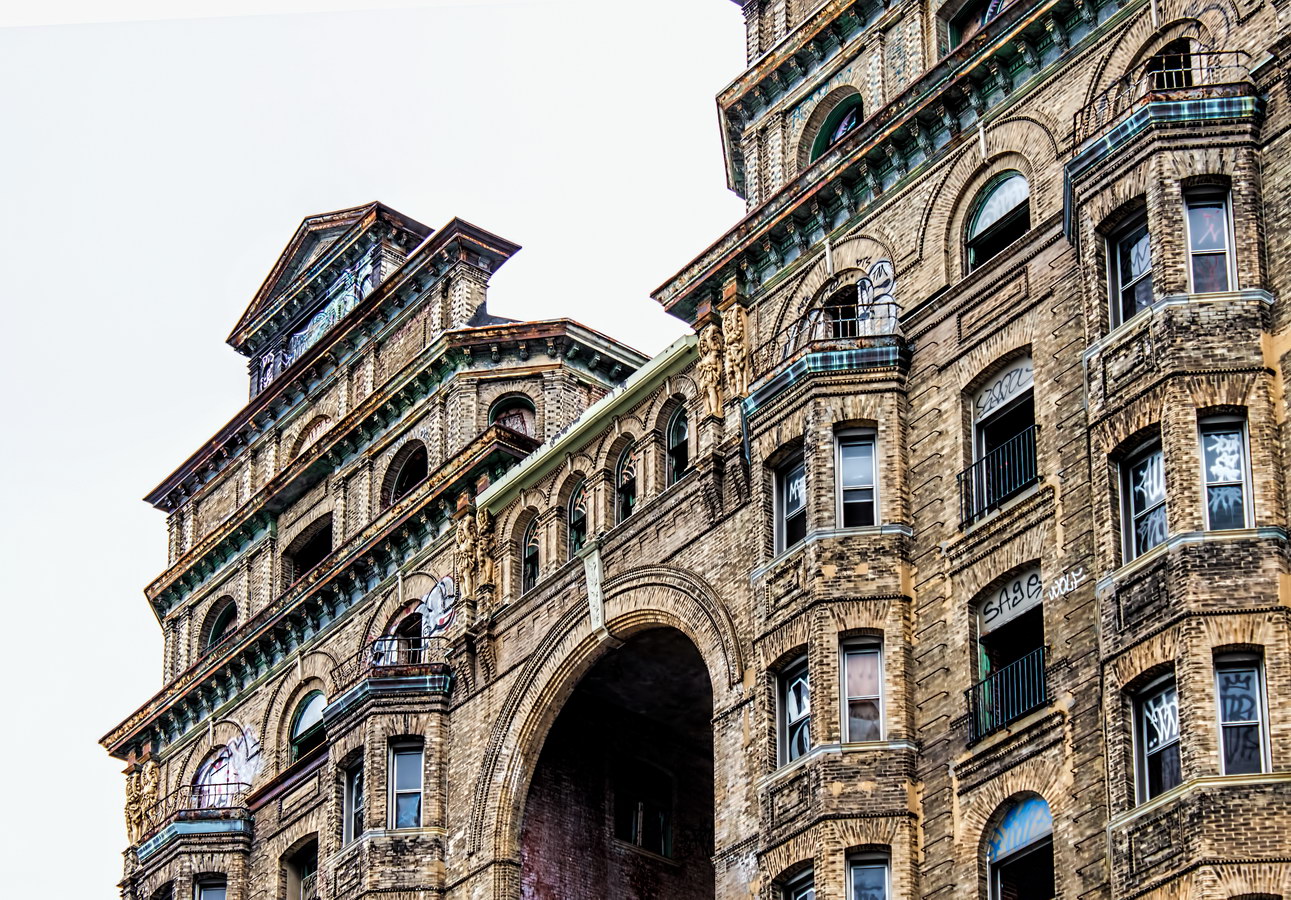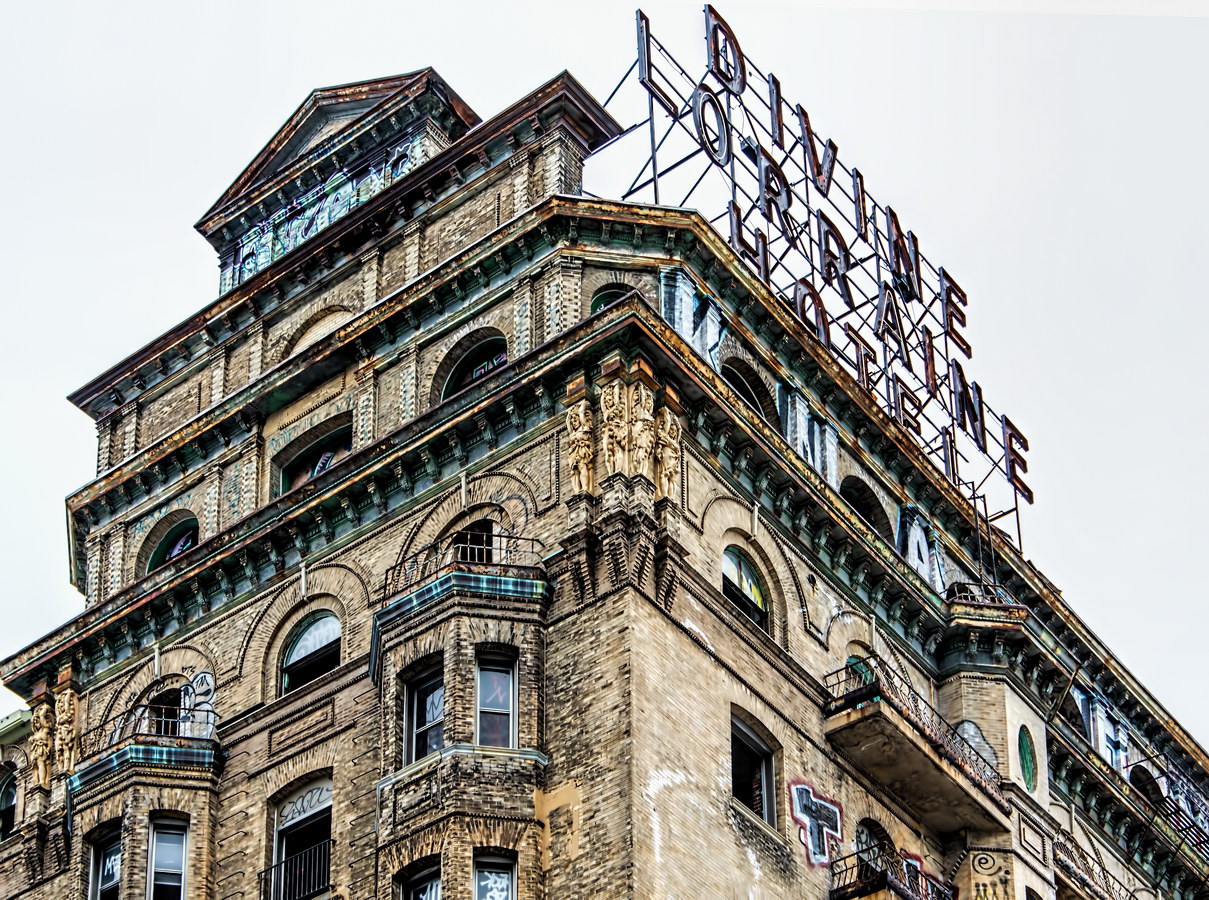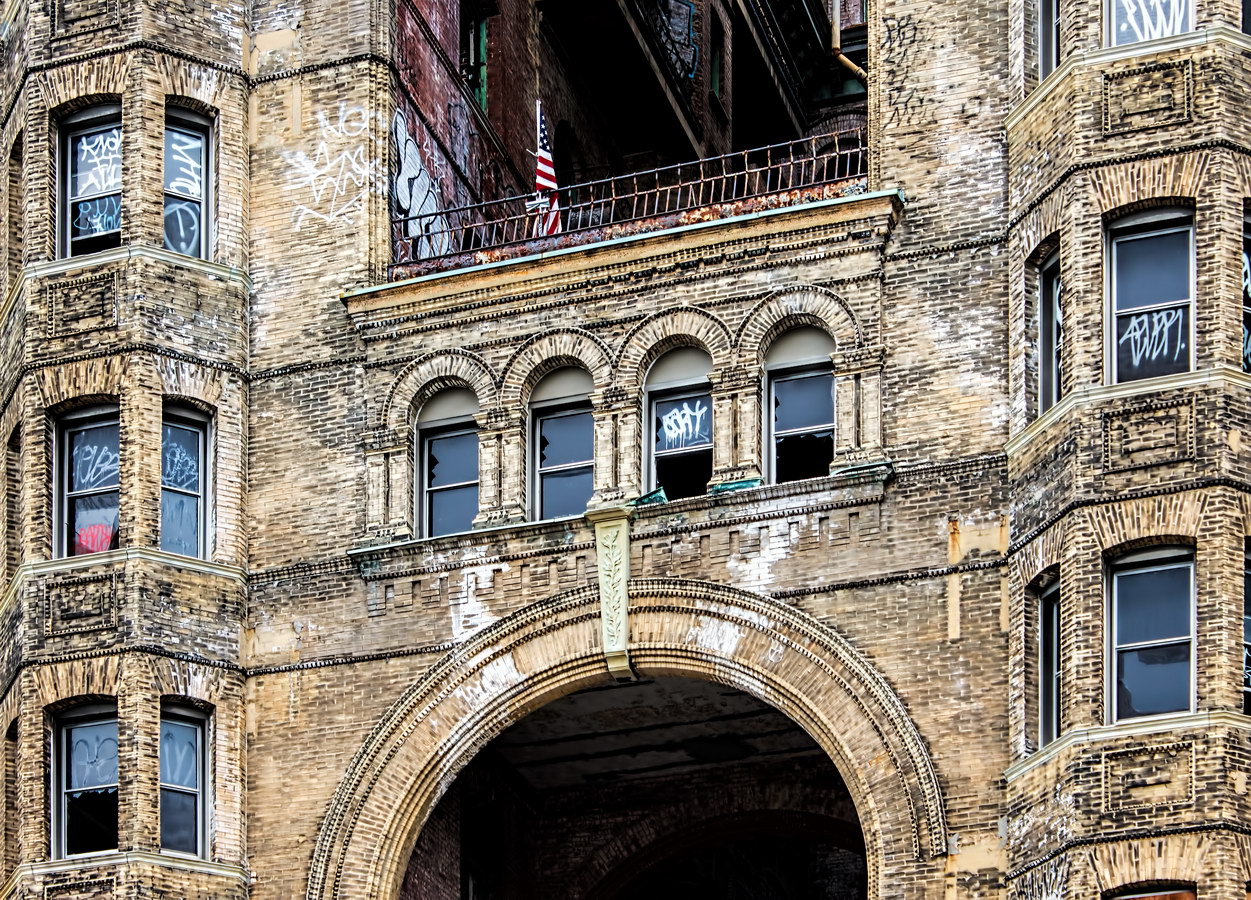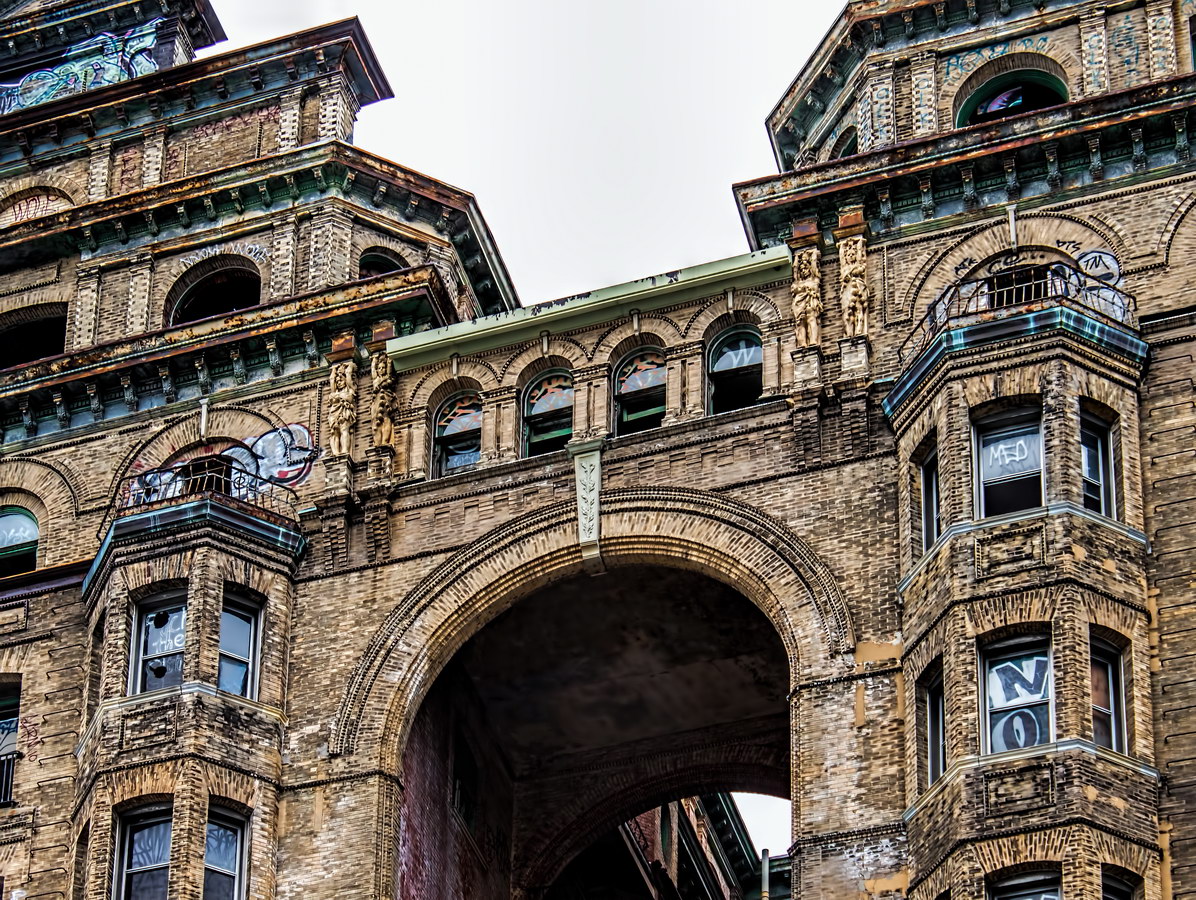Cable Building, at the southwestern corner of the NoHo Historic District, is the last remnant of a San Francisco-style cable car system that once served lower Manhattan. The nine-story* Beaux Arts building housed the massive steam engines and winding wheels that pulled 40-ton cables at 30 mph. Alas, the cable system was uneconomical. The last cable car ran just seven years after the first.
For architects McKim, Mead & White, this was their first all-steel-frame building. The four-story-deep basement held the machinery. Above ground, it was a doughnut of offices built around a central light court. Both of the building’s Houston Street corners are chamfered. Light orange brick and terra cotta rise above the two-story limestone arcade base.
While Broadway’s Bowling Green-to-36th Street cable cars did not survive, Cable Building did. Metropolitan Traction Company reorganized as New York Railways Company, and sold the building in 1925. For the next six decades the structure housed small businesses and manufacturers. Then in the late 1980s it went back to being an office building.
Angelika Film Center took up residence in 1989, using the four basement floors.
* The building appears to be eight stories, if you count the floors of large windows. But tiny square windows tucked under the cornice – and larger windows in the north facade – reveal an attic ninth floor.
Cable Building Vital Statistics
- Location: 611 Broadway at Houston Street
- Year completed: 1894
- Architect: McKim, Mead & White
- Floors: 9
- Style: Beaux Arts
- New York City Landmark: 1999
Cable Building Recommended Reading
- Wikipedia entry
- NYC Landmarks Preservation Commission designation report (NoHo Historic District, page 96)
- The New York Times Streetscapes/The 1893 Cable Building, Broadway and Houston Street; Built for New Technology by McKim, Mead & White (November 7, 1999)
- Wikimapia listing
- Emporis database
